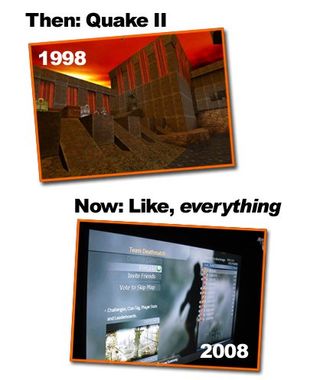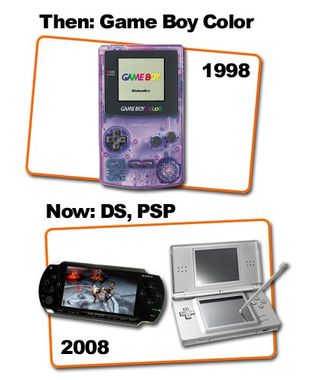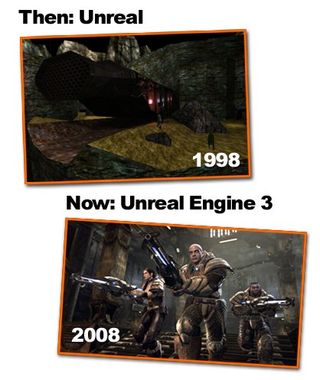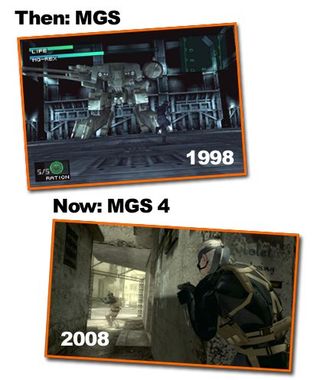1998 vs 2008: How has gaming changed in 10 years?
Life moves pretty fast sometimes – but videogames move faster. Here’s the proof
There’s no more tiring remark than, “Oh, Lara – she’s such a British institution.” Guess what? It’s just as well she isn’t anymore, because moving to San Francisco’s Crystal Dynamics was the best thing to happen to her in a decade. Gone were the plastic “assets”, the grid-based movement system, dodgy camera (well, almost), and stagnant game mechanics.
Gone too was the memory of The Angel Of Darkness, the catastrophic sixth instalment that all but killed the series. Instead came all the technical showmanship and quality production you’d expect from the maker of Soul Reaver, both in sequels Legend and Underworld. God bless America.


For the small price of your house, kidneys and healthiest family member, you could rent an ISDN line ten years ago, the internet’s equivalent of a magic beanstalk. You could download demos you’d normally buy on disc, use the term “superhighway” and sound only half-stupid, and play Quake II against people in far-flung lands. Oh, how far we’ve come.
Now, for little more than pocket change, you can digest all the ignorance and bile in the “civilised” world, then add the authors to your “friends list” so you can play them at videogames. And you can read these words, of course, you lucky, hateful bastards.


A console? In your pocket? With comparable sound and visuals to a real game? That’s quite something. How about you go play on your miracle machine and we’ll call the ambulance? In a year that saw the Game Boy Color trounce the Neo Geo Pocket, the idea of PlayStation-perfect Ridge Racer seemed like crazy talk.
There’d been the PC Engine GT, with its superb ports of R-Type and Street Fighter II – but at what cost? Six AA batteries for three hours of play, that’s what. No one in ’98 could have imagined God Of War, let alone Chains Of Olympus. And a game that involves stabbing things with a pen that doesn’t require your stepbrother and a trip to the hospital? Get outta here.


The launch of Unreal in 1998 was as much a milestone as Super Mario 64. 3D like this, with lights and shadows that weren’t painted on, in high-resolution and smooth as silk, was like something out of a Hollywood movie. An Eighties movie starring talking cereal boxes, perhaps, but that’s not the point.
Sign up to the GamesRadar+ Newsletter
Weekly digests, tales from the communities you love, and more
Today, after years that have seen Half-Life and Oblivion, the engine behind Unreal has evolved to power dozens of AAA titles, from Bioshock and Stranglehold to Mirror’s Edge and Splinter Cell. The Unreal brand, meanwhile, has been dwarfed by Epic’s Gears Of War, though the company itself remains as tight-knit a family as ever.


Despite his best efforts, Hideo Kojima failed in his attempts to make a single line of dialogue last ten years. He did come close, though, and few games reflect the changing times better than his action stealth epic. The coming of Splinter Cell, Gears Of War, and games like Call Of Duty 4 have all fed into its philosophy and design, giving its characters – God help us – even more to talk about.
And while its looks have evolved to near movie-quality in some respects, the stubborn tenets of the stealth genre, together with its voice actors’ stilted deliveries, ensure that the whole thing looks somehow familiar. It just goes to show that some things, no matter the technology, never change.


Obscuro-consoles from the depths of time

Retro machines from the last decade
Most Popular

